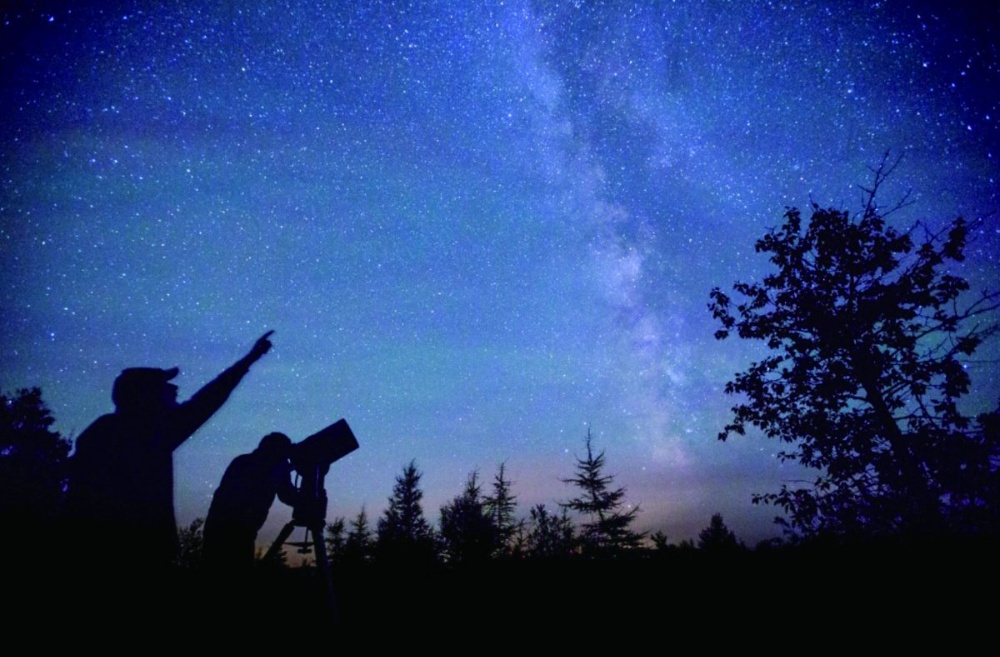PCE News
Earth to GV: Students Collaborate with NASA on Prototype Device
August 05, 2024

A group of Grand Valley State University students traveled to the Johnson Space Center in Houston, Texas over the summer to test their design of a flag-deploying device that successfully withstands the pressures of space. The project originated from a competition created by NASA called the Micro-g NExT Challenge.
“Astro Anchors,” a team of twelve students from the GVSU’s chapter of the American Society of Mechanical Engineers (ASME) organization, were chosen to collaborate with NASA through the special project last winter. The Astro Anchors were selected to move forward with their design and worked alongside a NASA mentor and engineer over the summer to develop and test prototypes of their design. Students involved in the challenge worked together to design a lunar flag, flagpole and anchoring system that can be easily deployed by a fully-suited astronaut while on the surface of the moon.
The goal of the contest is to inspire college undergraduates to design a device that could assist astronauts in space. Astro Anchors were the only team to complete each of NASA’s initiatives for the challenge. Their prototype and comprehensive report is now under review by NASA, with the possibility of being used in future Moon landing missions after more strenuous testing.
“It was a dream come true for myself and the entire team,” said GVSU student and ASME President Scott Strayer.
The Astro Anchor’s design features a flagpole and anchoring system specifically engineered to simplify the process of planting flags for astronauts in space. During their time at the Johnson Space Center, the Astro Anchors worked with Sergio Sandoval, a guidance engineer for NASA, who helped plan the team’s final design. According to Cebrina Kader, a member of the Astro Anchors, one of the hardest challenges was raising the flagpole to its full height. The maximum required height for a flag is ten feet, which proved difficult to deploy without overexerting the astronaut. Kader said with the help of their NASA mentors, club members and professors, the Astro Anchors were able to solve the problem.
“I definitely feel that we’ve grown from this project because it gave us exposure to real-life problems and challenges that, as engineers, we have to help resolve with our experience. You can learn a lot from a classroom, but experiences like this NASA challenge, I think, really helps a college engineer gain further experience in their field.” Kader said. “We had to actively research, test, and analyze our own designs, plus come together and brainstorm ideas for solving a real-life engineering challenge.”
After facing strict deadlines and overcoming numerous engineering challenges, the Astro Anchors successfully completed their flagpole design. The prototype was then sent to NASA’s Neutral Buoyancy Laboratory, which simulates microgravity, to test survival in the challenges of outer space. The flagpole prototype passed every test with flying colors and was mounted successfully, according to Strayer. NASA even recognized the Astro Anchors with the “Pay It Forward” Award for their work with the STEM students from Allendale High School and during the Roger That! Conference.
“Out of the four Lunar Flagpoles tested at the Neutral Buoyancy Lab, our device was the only (one) that passed each requirement given by NASA. Additionally, the feedback we received was mostly positive,” Strayer said. “The NASA diver who assembled our flagpole in microgravity conditions was very pleased with the entire deployment process and simplicity of our design.”
While the initial testing phase is over, NASA may choose to utilize the Astro Anchor’s flagpole design in their upcoming missions to the moon. The upcoming Artemis 3 mission will mark the first crewed moon landing since Apollo 17 in 1972. The mission will also include the first female astronaut and astronaut of color to land on the moon. The goal of NASA’s Artemis campaign is for scientific discovery, to inspire a new generation of space explorers and to bring lunar-related economic opportunities back to Earth, according to NASA.
The Astro Anchors submitted a fully comprehensive report on their designs and test day data, which is now under review by NASA engineers. Should the Astro Anchors design be chosen to be used for the Artemis project landings, tests of more severity and longevity will have to take place before it can land on the Moon. This process, according to Strayer, could take a year or more.
“We certainly hope NASA will use it, or at least parts of it,” Strayer said. “Later in the year, NASA engineers will review the test day outcomes to determine if parts of the successful designs can be incorporated into their existing design. If they decide to use our design, the entire process can take up to 1-2 years, given the subsequent stricter test conditions.”
The ASME club enters the Micro-g NExT challenge every year, so it is very likely that GVSU and NASA will get the opportunity to work together again in the near future.
“NASA was able to put the first man on the moon and achieve the impossible for human interaction with space,” Kader said. “The fact that we got to work with a NASA engineer who helps to make stuff like that happen is very exhilarating and exciting. It was an incredible experience.”

